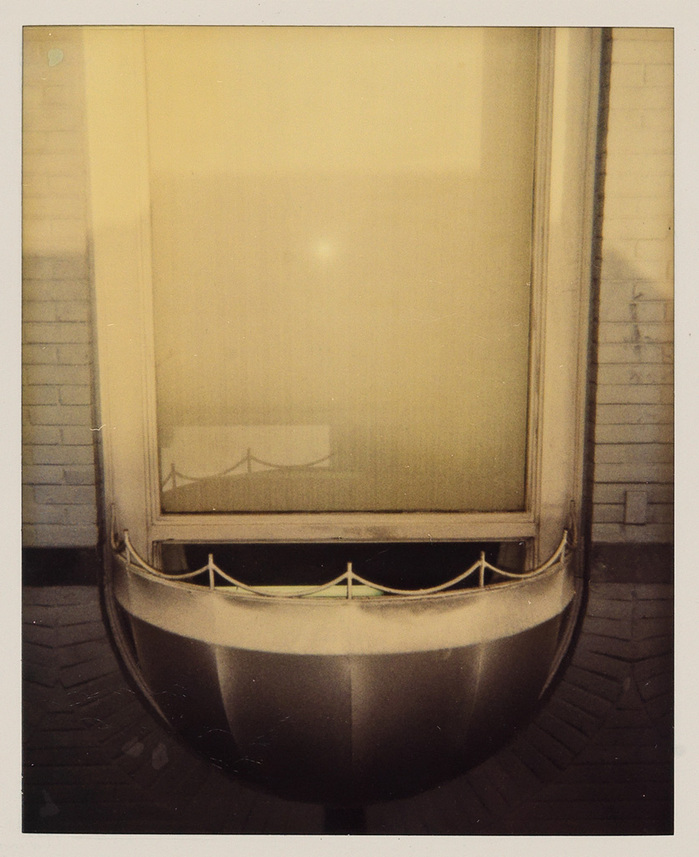
This interesting Polaroid from the Warhol Estate just turned up at Swann.
It’s apparently titled Urinal (Homage to Marcel Duchamp), which would make it kind of fascinating. But there’s nothing except an estate authentication stamp on it, no title, date, signature, nothing. So where did the title come from?
It’s also on a previous owner’s website, without the Urinal or the parentheses in the title. The provenance says it came from the tag sale portion of Sotheby’s 1988 Warhol auction.
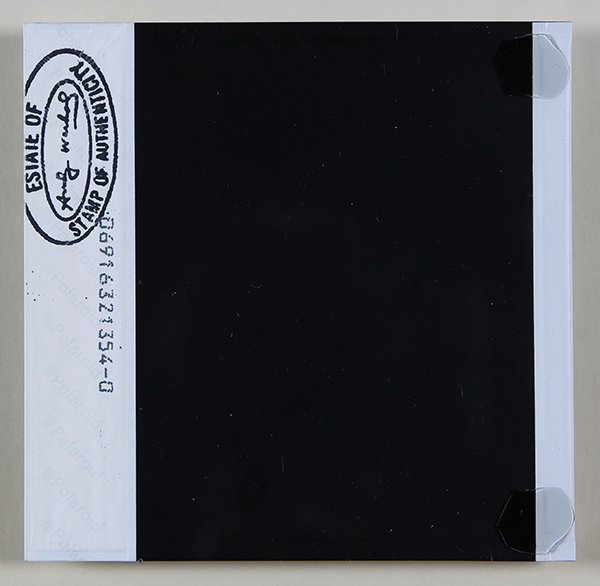
verso of this Warhol Polaroid, image via alpha 137
But it also says it’s a photograph of a urinal, when it is in fact an awning over an arched window. And what looks like adhesive on the back runs along one side, here the left, which would normally be the top of a Polaroid image. So how was it oriented again?
Assuming it’s what it says, though, it’s interesting that Warhol made his homage to Duchamp’s famously inverted sculpture by inverting an image. Or an object, a print (Polaroids are one-offs).
[Also worth noting: in 1973 Warhol bought the prototype for Arturo Schwartz’s 1968 Fountain edition. And Dakis bought it from the 1988 auction.]
update: Homage To Marcel Duchamp is a lot of reference for one Polaroid to bear. And it is probably worth considering how many Polaroids Warhol shot in his lifetime: approximately fifty hundred bajillion. And do they all have titles? Do any of them? What is another Polaroid with a title?
Sale 2431 Lot 126 ANDY WARHOL, Urinal (Homage to Marcel Duchamp), est $3-5000 [swanngalleries]
Category: art
Untitled (Erster Blick), 2016
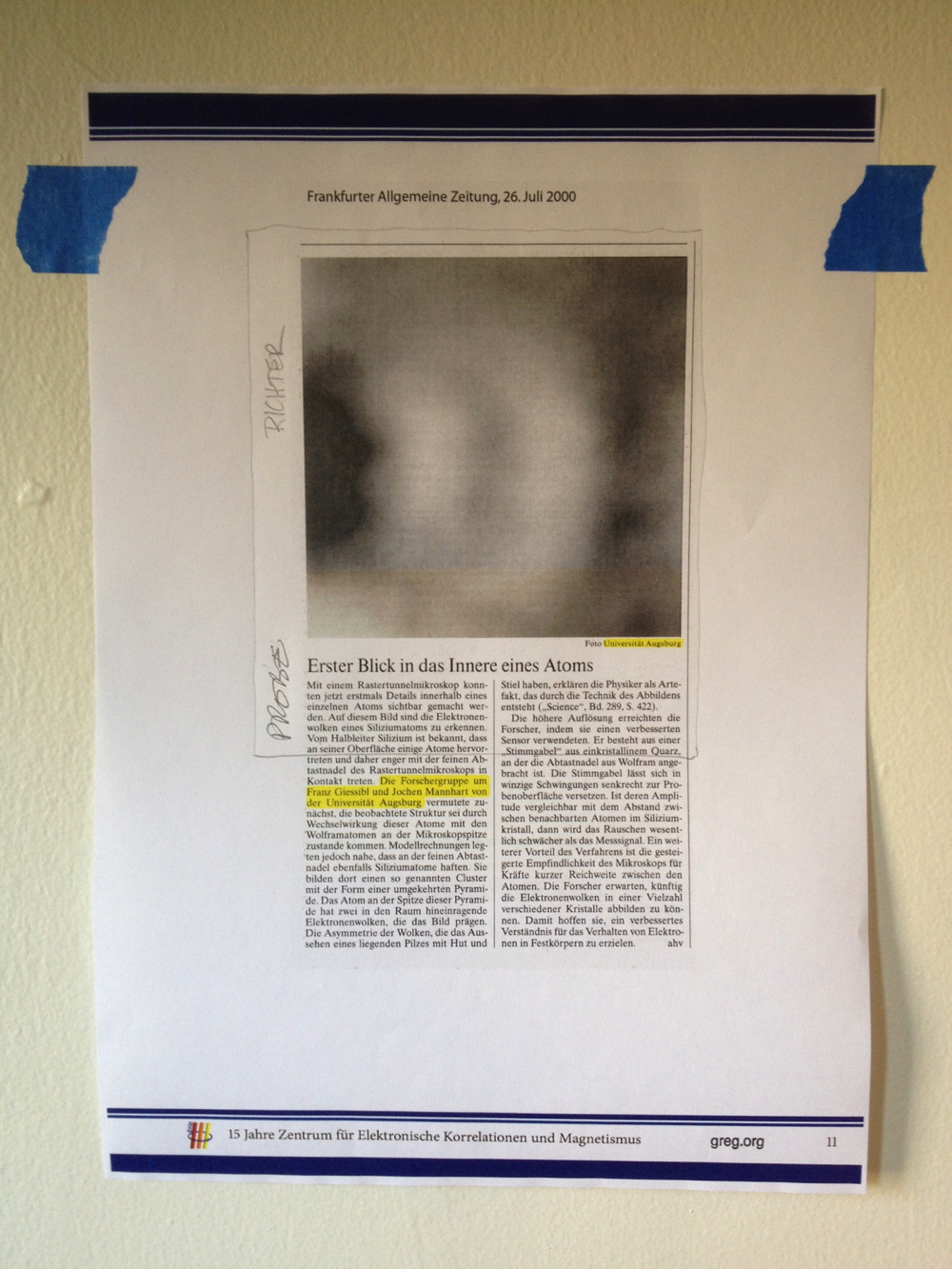
greg.org Untitled (Erster Blick), 2016, digital print and graphite on white bond, 38.6 x 27.3 cm (uncropped), ed. 100+20+10+6
I’m pleased to offer a limited edition, a sort of palate cleanser for Frieze London, an amuse bouche if you will, for FIAC.
Untitled (Erster Blick) is a digital inkjet print and graphite work on white bond. It is a slightly enlarged facsimile of a page from the press clippings archive of the Zentrum für Elektronische Korrelationen und Magnetismus at Universität Augsburg’s Institut für Physik.
It will be available until Thursday, October 27, when bidding opens at Christie’s Kensington for Gerhard Richter’s Erster Blick, a slightly enlarged illustration from the Frankfurter Allgemeine Zeitung published on 26th July 2000. The First Open Prints & Multiples sale is scheduled to begin at 2:00PM London (1:00PM UTC), and Richter’s work is Lot 76, so perhaps a little after 3:00? But don’t dally. And don’t come looking for mine if you lose out on Richter’s, because it will be gone, and you will lose twice.
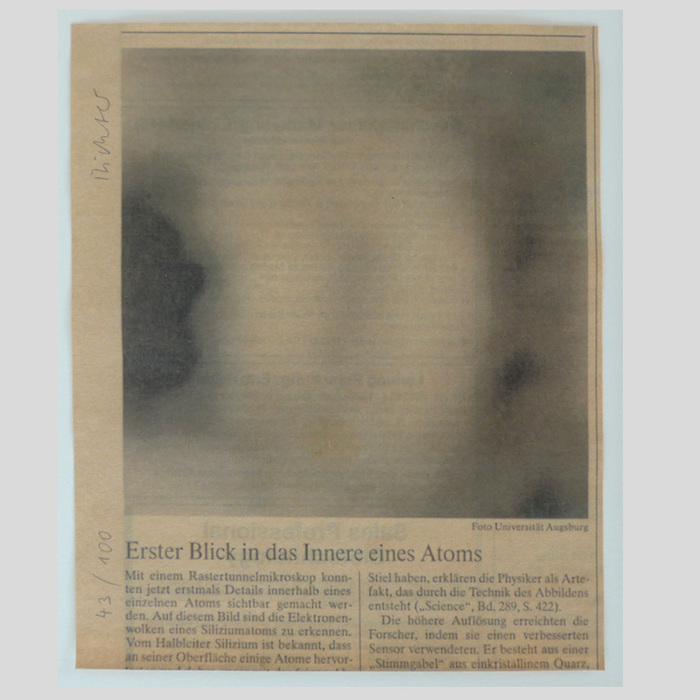
Lot 76 | Gerhard Richter, Erster Blick, 2000, offset print, 18.2×15.1cm, ed. 100, plus 20, 10 TP, 6 TP, est. GBP 2000-3000. via Christie’s
Following Richter’s offset print, Untitled (Erster Blick) will be available in an edition of 100, plus 20 Roman numeral copies, plus 10 trial proofs, plus 6 other trial proofs, marked Probe. All will be numbered, signed, and stamped. It is the artist’s intention they remain uncropped, but who knows? It’s a wild world out there.
[UPDATE: Thanks to all, and to those getting more than one, that’s fine, awesome even, but please consider others in your voracious collecting frenzies. Also, the prints will be numbered/designated in the order listed above. So if fewer than 100 prints sell before the auction, there will be no proofs. So buy early, then buy late? I really have no idea how this thing will play out.
The price for Untitled (Erster Blick) is $US20, shipped. Or it was. The edition is closed and no longer available. Thanks to the collectors and connoisseurs who purchased prints, they will be produced and delivered promptly, stay tuned.
UPDATE: Oh wow, the Richter didn’t sell [either, ha].
Previously, related: Untitled (Tanya), 2014
Richtersgarten
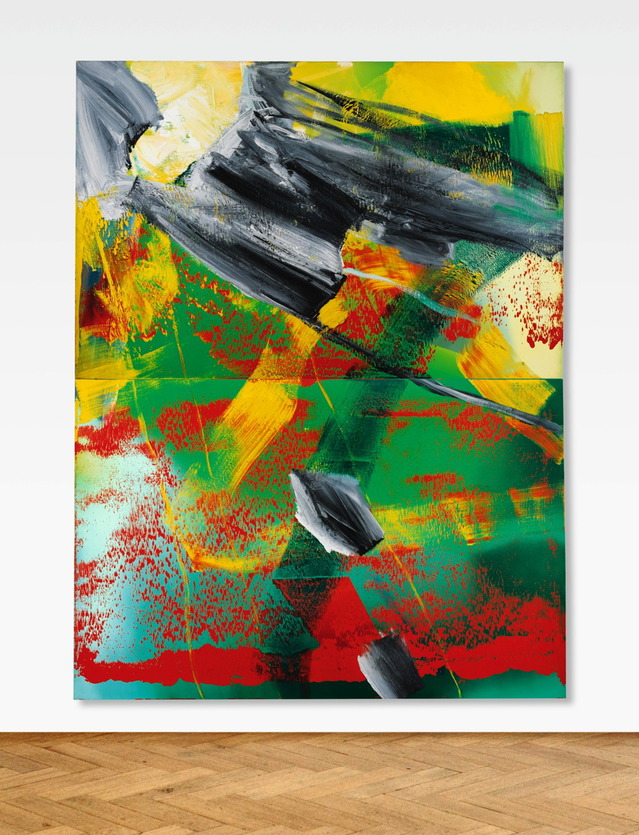
Part of me wants to make this post about auction houses shooting coverage, or about editing-generated hype for off-season auctions of off-peak squeegees. But I think I really just wanted to register my disapproval that such videos of such sales of such paintings are now a sufficient hook for attention from the Times. Which even I don’t care about at this point. So it must be the very existence of this video. But that is enough.
[sotheby’s via nyt]
Untitled (George Washington’s Coffin), 2016 –
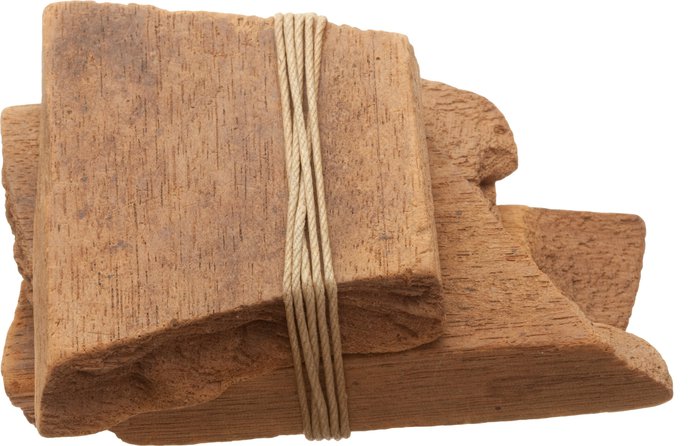
I cannot explain how I didn’t catch this when I saw it many months ago, but re-reading Steve Roden’s blog post about his return to painting after a year-long hiatus, this completely floors me:
Recently, I have also been obsessed with a photograph of two seemingly insignificant pieces of wood about the size of the inner part of a closed fist. The photograph appeared in an auction catalog, and I was fascinated to discover that these seemingly ordinary, or pathetic objects were pieces of George Washington’s coffin, and as such, their presence transcends their objectness.
Probably! But right now it is their objectness that I’m obsessed with.
Continue reading “Untitled (George Washington’s Coffin), 2016 –”More Aaron Kuriloff, Please
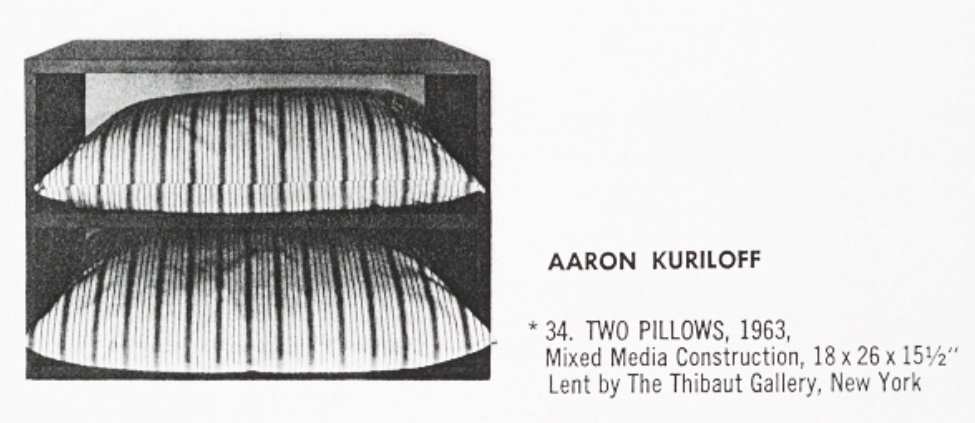
Aaron Kuriloff, Two Pillows, 1963, image and caption from Walter Hopps’ Boxes catalogue, Dwan Gallery, 1964, image: aaa.si.edu
In his Dwan Gallery catalogue essay, James Meyer calls him “a now-forgotten trader in readymades,” but I recognized Aaron Kuriloff’s name from Donald Judd: Complete Writings 1959-1975. Judd reviewed Kuriloff’s April 1964 show at Fischbach Gallery for Arts Magazine. He did not like it, dismissing the artist’s lightly assisted readymades as domestic misfires done better by George Brecht.
Now that I’ve seen some pictures, though, I’m kind of intrigued. For Boxes, the February 1964 group show organized by Dwan Gallery director John Weber, Andy Warhol sent three Brillos and a Heinz Ketchup, scooping the Stable Gallery by a month. And Kuriloff sent Two Pillows, 1963 [above], in which blue ticking-covered pillows were inserted in a blue-painted wood shelf.
No wonder Judd didn’t like it. I bet Haim Steinbach would, though. And Mark Stahl, who had a similarly promising-but-brief career with similarly found objects in the 1980s.
No less than Brian O’Doherty liked Kuriloff’s work, too. He reviewed the Fischbach show for the Times:
Both these shows, one [George Ortman] turning symbols into objects, the other [Kuriloff] objects into symbols, make a new cross‐roads where the traffic is getting heavier –a cross‐roads at which Jasper Johns originally planted his painted flags, breaking our reflex responses to the most loaded of symbols.
I’ll add some more images of Kuriloff’s works from 1963-67, the only period I’ve been able to find so far, and let’s just have a fresh look.
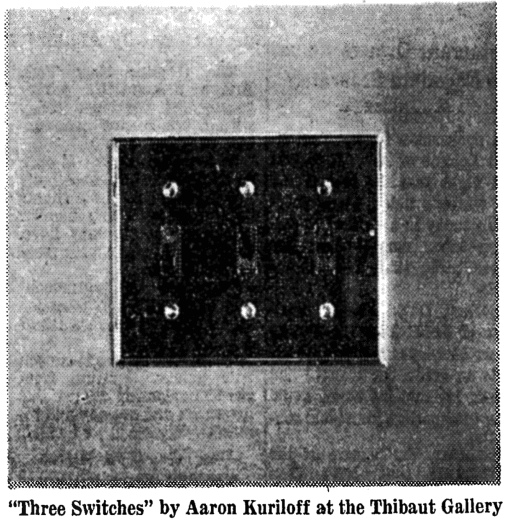
Aaron Kuriloff, Three Switches, 1963, Thibaut Gallery, image via nyt
The Times has at least two other reviews of Kuriloff’s work, both illustrated. In December 1963, he was in “Hard Center,” a group show at Thibaut Gallery organized by Elena and Nicolas Calas. From Brian O’Doherty’s review it sounds like it focused on the recontextualization as art of mass or consumer objects, an early example of Pop getting in formation. And the artist list shows just how far Pop has shifted since: Robert Breer, Nicolas Calas, Kuriloff, Walter de Maria, and Robert Morris. There’s a catalogue out there somewhere.
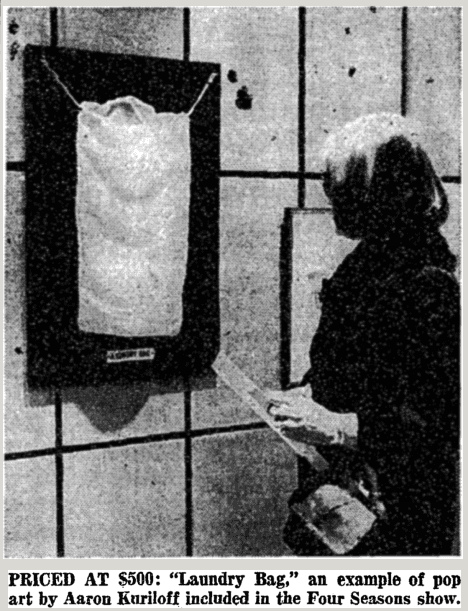
Aaron Kuriloff, A Laundry Bag, installed in 1965 at The Four Seasons, image: nyt
In 1965 Kuriloff is mentioned in a benefit sale/exhibition held at the Four Seasons. It seems kind of a mess, frankly, and the Times report doesn’t do it much justice, just sneering at now-acclimated art audiences not rioting over Pop Art. Kuriloff’s A Laundry Bag was just that, mounted against a green background, with a label, Erased de Kooning Drawing-style. Priced at $500 for mental health charity, it’s not clear if it sold.
What Is The Question?
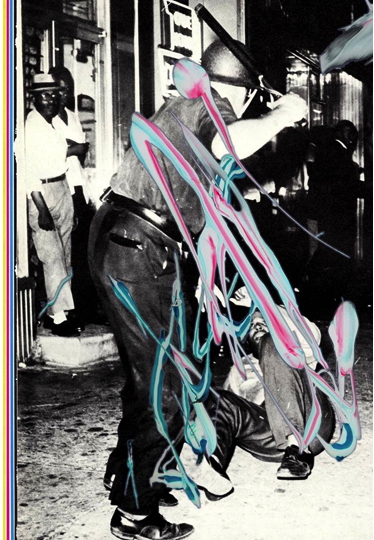
Kelley Walker, Schema Aquafresh plus Crest with tartar control, 2003, digital file, image: camstl.org
I am not at all ready to address the discussion and protests surrounding the exhibition of Kelley Walker’s work at CAM St Louis, but the statement by Paula Cooper caught me up. “The role of the artist, it has been said, is to ask questions, not answer them.” Chekhov said that, and he’s not wrong, but not right enough, either.
And KareemEstefan responded, in a tweet exchange with Pedro Velez, “True–but does Walker know what Qs his art is asking?”
That reminded me of the paragraph I’d cut from the top of Mirta D’Argenzio’s Rauschenberg essay I quoted yesterday. I am pretty sure this is the artist speaking:
“Gertrude Stein said on her death bed when they asked her what the answer was and she said, ‘What is the question?’ So I have to keep the question changing. The only way to do that is with an open mind.” It’s rather like the riddle of the sphinx. Rauschenberg, the insatiable, suggests that the riddle be left unsolved, and indicates that the very purpose of art is to keep changing its questions.
The very purpose of art is to keep changing its questions.
It seems to me that this is what is happening to Walker and his work in the 13 years since he made it. Not only have the questions changed, the audience has, too. And sounds like neither the artist, the curator, nor the institution understood that.
The sharpest thinking I’ve seen on Walker’s work is still Glenn Ligon’s essay in Parkett from 2010 [pdf]. Ligon finds the utter insufficiency of thought or discussion around Walker’s use of black imagery to be significant in itself, both a “dilemma” and a source of “enormous vitality.” He correctly identified “Kelley Walker’s Negro Problem” as the art world’s problem, too. And America’s. He’s still right.
‘A True Short Circuit’
I’m not alone! It’s not just me! In the introduction to the catalogue for her 2008-9 show, “Robert Rauschenberg | Travelling 70-76,” curator Mirta D’Argenzio wrote:
His favorite means of self-expression were always inclusive of change, travel, and collaboration. He seems from the very beginning, paraphrasing words of his own, to have committed his entire activity to the task of defining an ever more ample concept of collaboration, always in a state of becoming, that nearly made it possible to do away with the very notion of subjective behavior on the part of the artist,
Rauschenberg made a decisive contribution to superseding the notion of the individuality of the author: a notion very much emphasized by modernism, and then virtually discarded by post-modernist thought. His absolute freedom in this respect found expression from the very beginning in the intersubjective approach that permitted him– from his first works with Susan Weil, and then in his relationship with Cy Twombly, and immediately thereafter with Jasper Johns– to set up a true short circuit that questioned the modus operandi of western art and the very concept of the individuality of the author. This attitude, however, was in any case to lead him to preserve a specific identity that found paradoxical reinforcement in its own self-negation.
In the discussion for Paper Monument’s Social Medium anthology Sunday, I tried to make this exact point about Rauschenberg’s collaborative works, especially in the earliest days of his career. And here it is/was, right there in 2008. 2009. In an Neapolitan exhibition catalogue about works from the early 70s, when Rauschenberg was traveling the world and absorbing influences and materials and references.
D’Argenzio goes on
Rauschenberg insisted: “Ideas are not real estate.” And then he continued: ” “In collaboration one can accept the fact that someone else can be so sympathetic and in tune with what you’re doing that through this they move into depths which might not be obvious if that person had been working alone in a studio with the door shut…I think part of our uniqueness is the fact that we are ill-equipped.
Except that this is a quote from a 1974 interview with Rauschenberg about printmaking. Prints are inherently collaborative and technically contingent, and foundries are always good about namechecking. But that is not anything like questioning the concept of authorship. If anything, it’s auteurist. As Walter Hopps saw it in the catalogue for the 1999 retrospective, “in collaborations, Rauschenberg simultaneously functions as composer, orchestra conductor, and first violinist.”
Rauschenberg and Johns might have been hoping to question the modernist notion of authorship when they hid a flag painting behind the door of a work that was first known as, Construction with J.J. Flag. But when faced with the decision, rather than short circuit their individual careers, they ended up pulling the plug. It was self-negation as self-preservation. [h/t @andrewrusseth, whose tweet about that real estate quote set me on this hunt.]
Buy Robert Rauschenberg. Travelling ’70-’76 [amazon]
Untitled (I’ll Be Your Mirror), 2016
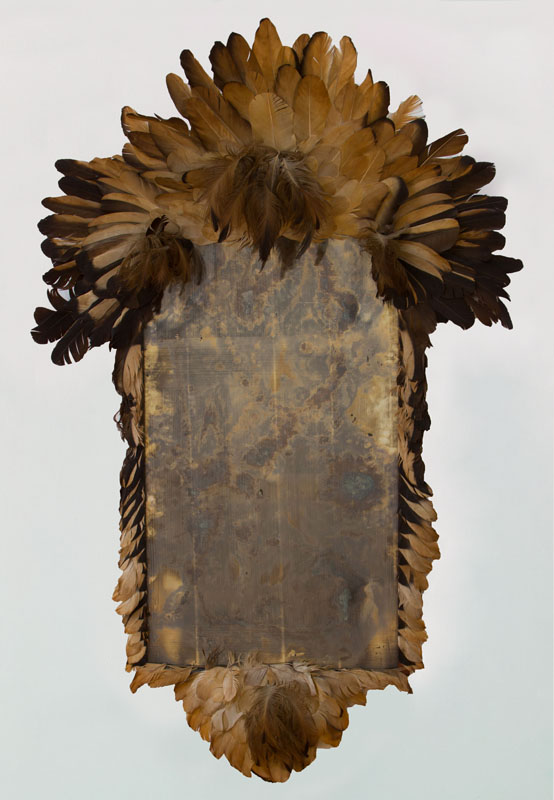
Untitled (I’ll Be Your Mirror), 2016, 70 x 46 in., feathered mirror by Bill Cunningham
The end credits for Richard Press’s documentary Bill Cunningham New York run over Nico and the Velvet Underground’s langorous, “I’ll Be Your Mirror.”
In the 1950s, before he took up a camera and changed the world, Cunningham designed hats for his own label, William J. He also created some unknown number of objets d’art and furniture. Well, at least one piece is known. The fashion illustrator Kenneth Paul Block considered this feather-covered mirror by Cunningham to be one of his most prized possessions.
It is large, 70 x 46 inches, and has an extraordinary patina. It holds the wall like a 50s Bruce Connor or Rauschenberg. I put #painting in there, but maybe it’s #combine instead. Oh wow, I just found this photo of Merce Cunningham dancing Aeon (1961) in a pair of feathered chaps Rauschenberg designed.
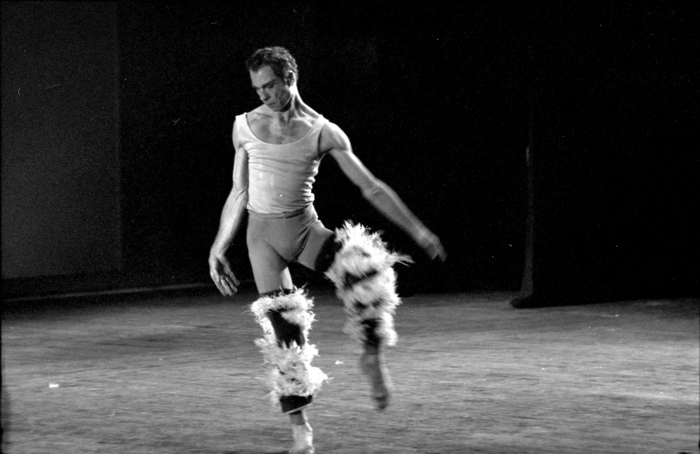
Merce performing Aeon (1961) in Tokyo in 1964, photo: Yasuhiro Yoshioka/Sogestu Foundation, via walkerart
Block passed away in 2009 and his partner of over 50 years, artist and textile designer Morton Ribyat, died in March. If you’re interested in buying this work, email or call me whenever you’re ready. If you’d like to take physical custody of it, though, you’d better move fast. UPDATE: And have more than $13,000. Wow.
INFLATION UPDATE As of 2017 we know where the mirror is. For sale here for $60,000.
Sept 23, 2016, Lot 377: AN IMPORTANT FEATHER-MOUNTED MIRROR, DESIGNED AND CREATED BY BILL CUNNINGHAM [stairgalleries]
Previously, related: Untitled (Joan Collins Toile de Jouy), 2015
Social Medium Panel: Sunday 9/18 @ 3PM, NYABF Classroom
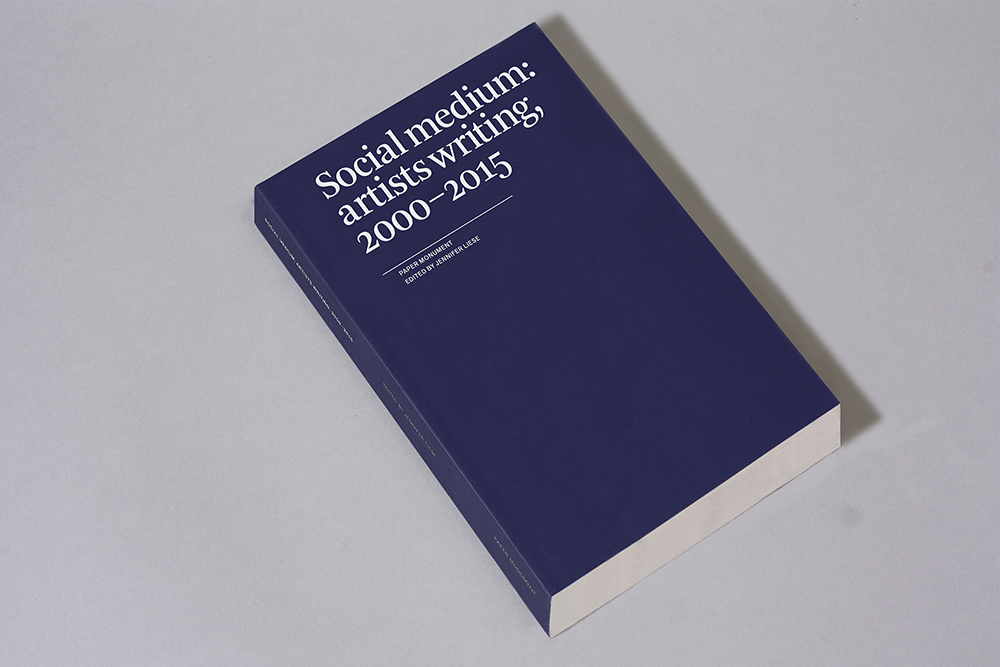
I’m kind of giddy even to type this, but I will be in a panel discussion this Sunday to talk about Social Medium: Artists Writing 2000-2015, an anthology published by Paper Monument and edited by Jennifer Liese. And yes, that means that I have an essay in the book. Technically, it’s a revised version of the series of blog posts I wrote between 2011-13 about Erased de Kooning Drawing, but it still feels unreal to me that it’s actually happening.
The talk will be held in conjunction with the preview of the book at the NY Art Book Fair Classroom, PS1, 3pm. Also in the discussion, which Jen will be leading: Ginger Brooks Takahashi, Josiah McElheny, John Miller, and Mira Schor. I mean, right? You should come back to NYABF just for these people.
Later I will write more about the anthology, which looks amazing; with 75 artist writers, it’s easily 15x as amazing as our 5-person panel will be, and the official launch next month at The Kitchen should be great too. But for now, the point is, I am stoked for Sunday.
Social Medium: Artists Writing 2000-2015, published by Paper Monument Oct. 20, 2016 [papermonument]
NY Art Book Fair | The Classroom [nyartbookfair]
The Madoff Provenance Project In ‘Tell Me What I Mean’, @ To___Bridges___ Thru 10/23

installation view, “Tell Me What I Mean,” at To_____Bridges_____ 11 Sept – 23 Oct. 2016, image: John Garcia
I’m psyched to announce that The Madoff Provenance Project is included in a group show, “Tell Me What I Mean,” at To_____Bridges_____ in NYC, which opened Sept 11 and runs through October 23rd, 2016. The show, curated by artist John Garcia, considers the way context and metadata affect the way an artwork is experienced and understood.

study for MPP-014-KEL, 2016, recto, 12×9 in., ink, pencil, and watercolor on Arches
John was thoughtful and intriguing in his invitation to include the Madoff project, which did not have any obvious physical manifestation. But meeting that challenge, and having the work seen among an interesting group of artists, made me say, “Hell, yeah” pretty quickly. Besides me, the show includes work by Sophie Calle, Sara Cwynar, Robert Heinecken, Rose Marcus, Alex Perweiler, Peter Piller, Michael Bell-Smith, and Colin Snap.

study for MPP-020-MAT, 2016, recto, 12.875 x 9.25 in., ink, pencil, and marker on Arches
Unsurprising to most, no owner of an authenticated Madoff-provenance artwork has yet agreed to have their work stamped with the “ex collectio MADF” stamp I created. So for this show I made “studies,” 1:1 facsimiles of some Madoff works, properly stamped. In their stripped down nothingness, they definitely turned out more Stephen Prina’s The Complete Paintings of Manet than Vik Muniz’ Verso.

“Tell Me What I Mean,” Installation view, The Madoff Provenance Project, 2014- , image: John Garcia
I also put together a few binders of court data and auction records, which serve as a comprehensive reference to all the artworks in the Madoff Provenance Project. I feel confident that if Mel Bochner could have had Zazzle custom print the binders for Working Drawings and Other Visible Things on Paper Not Necessarily Meant to be Viewed as Art, he totally would have.
To____Bridges_____ is a year-long project space in the Bronx run by The Still House Group. A second show of photographer Gary Perweiler’s 70s and 80s advertising images, recontextualized by his son (and TSHG member) Alex Perweiler, runs concurrently. The space is open by appointment.
To_____Bridges_____ [to-bridges.info]
Ex Collectio: The Bernard Madoff Provenance Project
Double Double
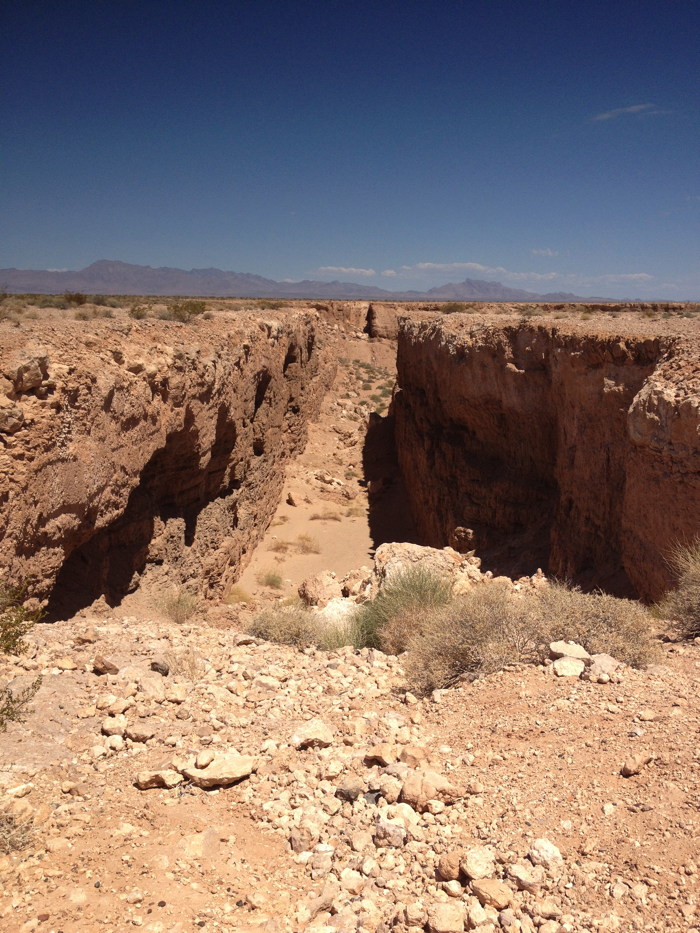
One of them, anyway: Michael Heizer Double Negative, 1969, south side, where the calving of boulders and sediment is becoming significant. image: August 2016, greg.org
There is so much about Sturtevant I don’t know, and it amazes me every time I find out something else about her and her art.
For example, have you read Bruce Hainley’s book about Sturtevant, Under The Sign of [sic]? Of course you haven’t, because if you had, the other week when that New Yorker profile of Michael Heizer came out, ALL you would have been thinking and tweeting and yammering about was Sturtevant’s Heizer Double Negative.
I repeat, Sturtevant had a project to repeat Michael Heizer’s Double Negative, within months of Double Negative‘s unveiling, and it was called Heizer Double Negative.
And it would have been NEXT TO Double Negative. Let’s read on.
Have Yourself A Hammons Little Christmas
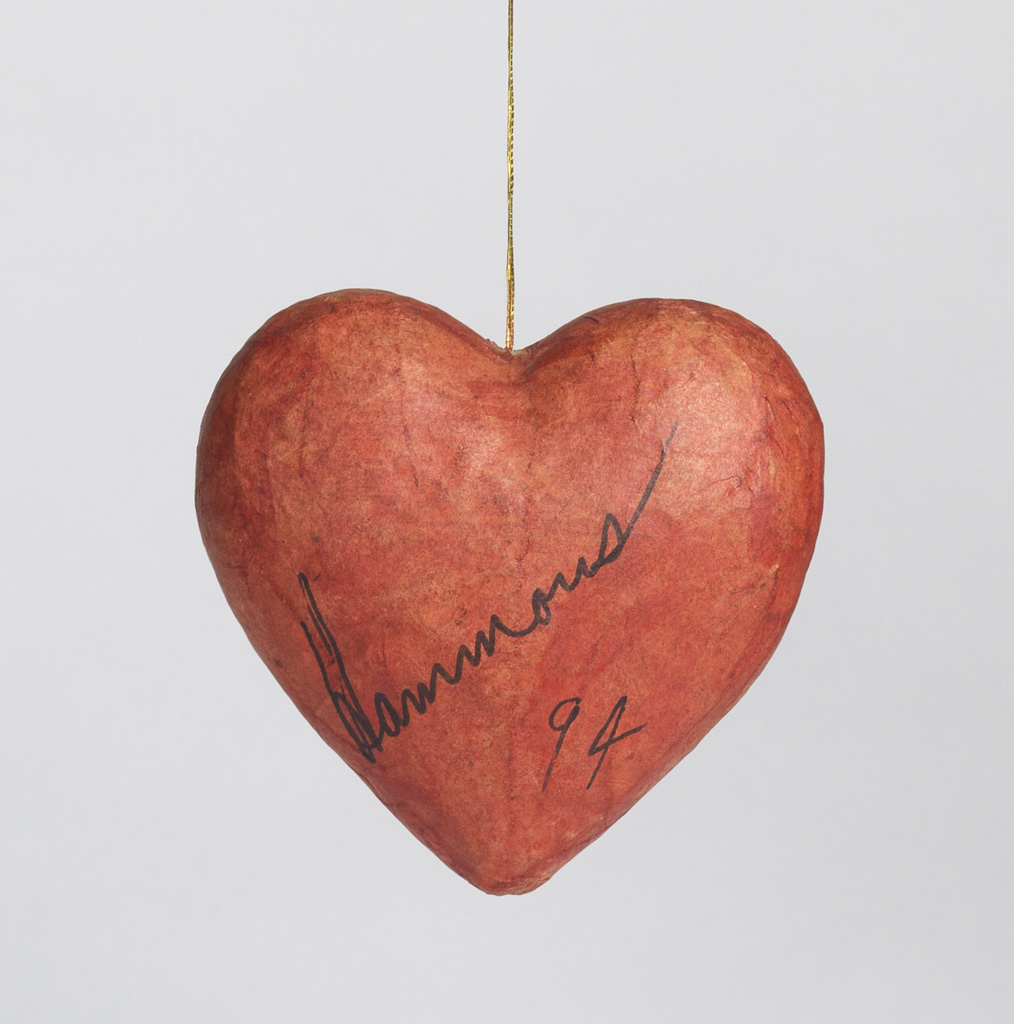
Untitled (Heart), 1994, via swann
This is a papier mache heart ornament signed by David Hammons, which he gave to Sara Penn in 1994. Penn was the owner of Knobkerry, a Tribeca dealer of African and Asian textiles and home furnishings which Hammons filled with work in January 1995.
Infiltrated might be a better word. Hammons made work by, with, and around Penn’s merchandise, combining cultural signifyin objects to create charged puns. [The show was the hook for one of my favorite texts on Hammons’ work, “Wreaking Havoc on the Signified”, by Coco Fusco in Frieze.]
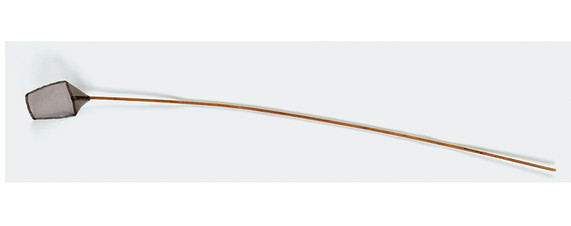
Untitled (Fly Swatter), 1992, image via swann
Anyway, it looks like Penn accumulated a nice stash of Hammons swag. In 2008 a small African American Flag (1990) and Untitled (Mona Lisa), a little, postcard-size collage from Penn sold at Swann, the NY auction house. The collage is dated 1989 and has “Marry, Christmas David” inscribed on the back. A five-foot long sculpture titled Untitled (Fly Swatter) (1992) sold in 2010. It was called “The World’s Most Expensive Fly Swatter?” after blowing out the estimate.
Sounds like the Knobkerry show was a long time coming. Also that David Hammons probably has an off-the-hook Christmas Tree.
Oct 6, 2016 | Lot 168, David Hammons, Untitled (Heart), 1994, est $6-9000 [swanngalleries.com]
Rob Pruitt Birthday Panda Balloon Bubble Has Not Popped Yet

I have bought an inordinate amount of stuff from Rob Pruitt’s Flea Markets over the years, and never more than since he’s moved it to eBay. Still, I missed out on the crazy speculative run-up in the signed birthday panda balloon market in June. Now, like all but five of you, I’m left to wait for them to turn up at Phillips.
Untitled (redbox), 2016
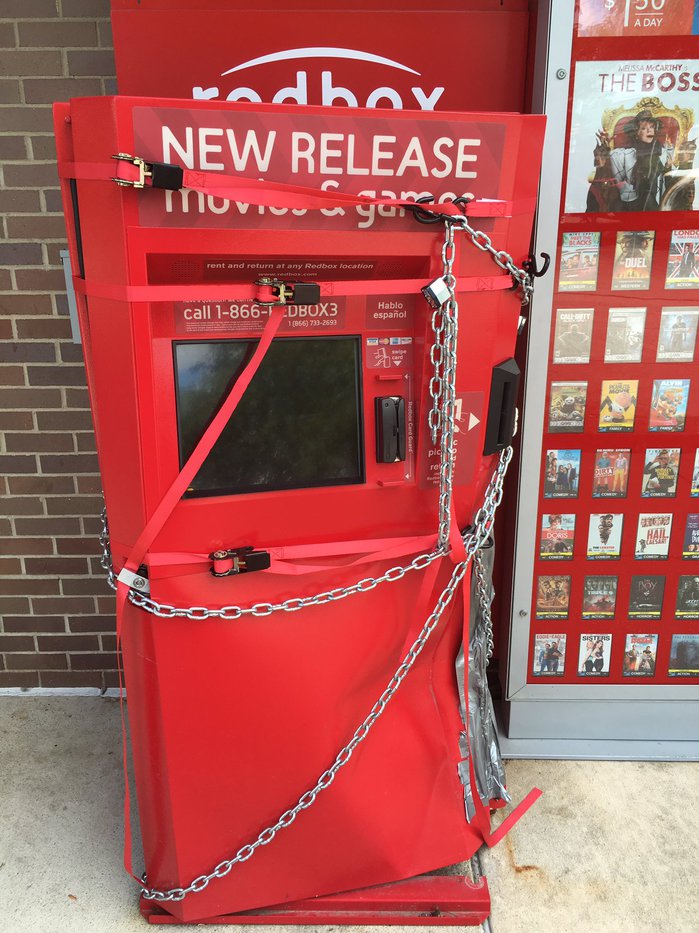
Untitled (redbox), 2016, altered redbox dvd rental kiosk, ratchet nylon web straps, chain, padlock, aluminum tape. installation view via @rgay
Someone wanted a movie collection really badly. pic.twitter.com/gDnhpbmCuo
— roxane gay (@rgay) August 25, 2016
Can you claim a work if you have no idea where it is? Writer Roxane Gay snapped this great piece and posted it to Twitter this morning. The web straps immediately made me think of the straps on the previous, Untitled (Shenanigans) piece. There’s menace and violence, but it’s less political here. More Hollywood. The chains are what really make it for me.
Gay is a professor at Purdue, and that brown brick looks familiar, so maybe this was outside a McDonald’s in West Lafayette somewhere. I don’t think it’ll be up for long, but it’s enough for the CV, at least.
Untitled (Shenanigans), 2016, Installation View
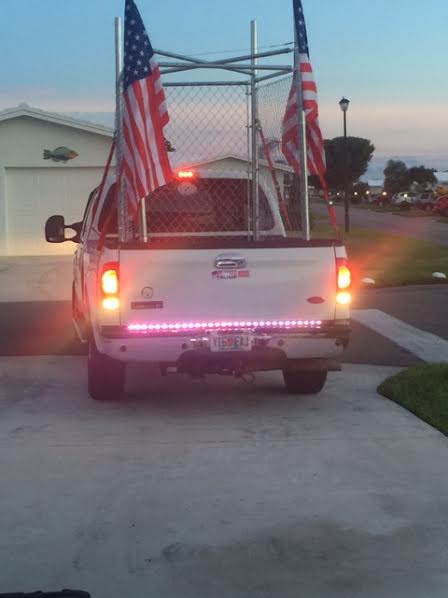
It seemed so much funnier when Cady Noland did it.
Maybe not funny, but at least it didn’t freak you out. Noland’s artworks drew from the raw aesthetic landscape of late 20th century built America to shed light on uncomfortable truths about patriotism, violence, commercialism, waste, the American psyche.
But it did it in an art context. Whatever it was, or however dark or unsettling, it was still [just] art. You could walk away from it.
Or wake up from it, like a bad dream.
Now there’s a white nationalist bigot in Florida trolling Muslims, and protesting Hillary Clinton and her treasonous supporter citizens by building a lock-em-up protest cage in the back of his pickup truck. No voter shenanigans, he says on Twitter: Trump landslide or in the cage ya go.
My instant impulse, or maybe it was a coping mechanism, was to make a Noland reference. Then as I got ready to post this thing here, and declare it a work [as one does around here], I got cold feet. The reality of this person and his anger and hatred and poisonous rhetoric and not-idle threats piled up, and I reconsidered. This is literally not-helping, I feared, it is making-worse.

But after a couple of days of looking, and thinking, and seeing this guy’s gesture/threat circulate, I came to see this as important. Or at least real. Relevant. This bigot’s sculptural move was atypical, even perhaps unique, but it is a datapoint in a network, a churning system of political hate. These images are of a physical object manifesting the digital flow of right-wing ideas and imagery across Twitter and Facebook. It’s a post-Internet avatar of Trumpist America.
Looking at it, now I wonder: is this how Noland saw, how she read, how she felt, when she made her works? Did she dream of making toxic, dystopian, American flag-draped cages, only to wake up and find the dream was still there? And wasn’t even a dream?
